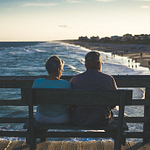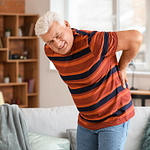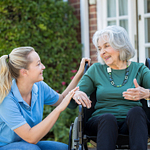Introduction to Home Safety for Seniors
As we age, home safety becomes a paramount concern. According to the CDC, one out of four older adults falls each year in the US, making it imperative for seniors to ensure their homes are safe and secure.

The Importance of Home Safety for Seniors
Home safety for seniors is not just about preventing falls. It’s about creating an environment that promotes independence, comfort, and overall well-being. A few simple modifications and adaptations can significantly reduce the risk of accidents and enhance quality of life.
Modifications and Adaptations for Seniors
Home adaptations for seniors can range from installing grab bars and railings to improving lighting and removing tripping hazards. The National Institute on Aging provides a comprehensive guide on home modifications for older adults, offering practical tips for making every room in the house safer.

Understanding the Risks: Common Home Hazards for Seniors
Home is a haven for most seniors, but it can also present numerous hazards. A clear understanding of these risks is critical in mitigating them. In different areas of the home, such as the bathroom, kitchen, and stairs, potential dangers lurk. For example, slippery floors can lead to falls, while improperly stored kitchen tools can cause burns or cuts.

Health-related risks are also a significant concern.
Falls are the leading cause of injury among seniors, leading to fractures or head injuries. Fires or burns due to mishandling of kitchen equipment or heaters are also common.
Recognizing Home Hazards for Seniors is Essential
Recognizing these risks and implementing preventative measures can drastically reduce the likelihood of accidents. This includes installing handrails, improving lighting, and removing tripping hazards. Understanding these risks equips seniors and caregivers with the necessary knowledge to create a safe living environment. With the right awareness and precautions, seniors can enjoy their golden years in the safety and comfort of their homes.
Essential Modifications: Making the Home Safer
Ensuring safety at home is paramount, especially for seniors. The first step involves assessing the home for potential risks. This includes identifying areas that may cause accidents such as slippery floors, cluttered pathways, and poorly lit rooms.

Modifications to Improve Mobility and Prevent Falls
To improve mobility and prevent falls, consider installing handrails, grab bars, and nonslip mats. These modifications can significantly reduce the risk of falls.
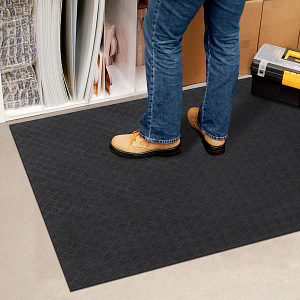
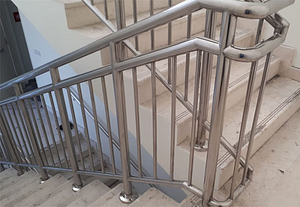
Adjustments for Better Visibility and Accessibility
Adjustments for better visibility and accessibility are also critical. Install better lighting, especially in stairways and bathrooms, and maintain clear pathways throughout the home. These simple changes can make a home safer and more accessible for seniors.

Adapting to Changing Needs: The Role of Assistive Technology
As we age, our needs change, often necessitating modifications to our homes to ensure safety and independence. One such modification is the incorporation of assistive technology. These innovative solutions can dramatically improve the quality of life for seniors by compensating for physical limitations and ensuring a safer living environment.
Examples of Assistive Technology for Seniors
There are numerous types of assistive technology available today. Medical alert systems, for instance, provide a lifeline to help in emergencies, while stairlifts can prevent falls by providing secure, comfortable transportation up and down stairs. Other examples include automatic medication dispensers, video doorbells, and smart home systems that control lighting, temperature, and security.
Choosing the Right Assistive Technology
When it comes to choosing the right assistive technology, consider the individual’s abilities, needs, and living situation. Consult with healthcare professionals, such as a licensed occupational therapist, who can provide personalized recommendations. Researching various products, reading customer reviews, and assessing the cost-effectiveness of each option can also aid in making an informed decision.
Reducing Risks in the High-Hazard Kitchen Area
While the kitchen serves as the heart of many homes, it’s also a high-hazard area, particularly for seniors. Common risks include burns and slips. To mitigate these risks, incorporating safety modifications is essential.
Modifications for a Safer Kitchen
Implementing design changes can significantly improve safety. Consider swapping traditional doorknobs for lever-style handles, easier for arthritic hands to operate. Likewise, automatic shut-off devices for stoves can prevent potential fire hazards. For more information, refer to this resource from the National Institute on Aging.

Organizational Tips for Easy Access and Reduced Strain
Proper organization reduces strain and increases accessibility. Store frequently used items at waist level and use pull-out shelves to minimize bending. For more organizational tips, check this brochure from CDC.

Bathroom Safety: Essential Changes for a Risk-Prone Space
As one of the most frequently used spaces within the home, the bathroom also poses some significant risks, especially for seniors. Slippery floors, hard surfaces, and high thresholds can lead to falls, making bathrooms a potential danger zone. [CDC]

Essential modifications can drastically reduce these risks. Raised toilet seats can help seniors maintain balance, while walk-in tubs eliminate the need to step over high edges. Handrails, non-slip mats, and adequate lighting can also make a significant difference. [National Institute on Aging]
The Importance of Cleanliness and Dryness
Maintaining cleanliness and dryness in the bathroom is equally important. Wet surfaces increase the risk of slips and falls, while a clean environment prevents infections. Regular cleaning, proper ventilation, and the use of absorbent bath mats can help achieve this. [CDC]

Prioritizing Comfort: Modifications that Enhance Quality of Life
Your comfort and safety go hand in hand when it comes to living independently in your senior years. A study published by the National Institutes of Health shows a strong correlation between comfort and safety, emphasizing the importance of a comfortable home environment to reduce potential health risks.
Adjustments for Easier Living
Several home modifications can significantly enhance your quality of life. Adjustable beds and easy-open windows are just two examples. Adjustable beds can help alleviate a variety of health issues, such as acid reflux, back pain, and breathing problems. Easy-open windows, on the other hand, can be crucial for seniors with limited mobility or arthritis, providing easy access and ventilation without the need for physical strain.

Balancing Safety Needs with Personal Preferences and Comfort
While safety is crucial, it shouldn’t compromise your comfort and personal preferences. It’s essential to find a balance, ensuring that necessary safety adaptations do not make your home feel clinical or impersonal. For example, handrails can be installed in the bathroom for safety, but they can also be styled to match your decor.
Remember, safety doesn’t have to be ugly – it can blend seamlessly with your personal style, enhancing your comfort and quality of life.
Conclusion: Empowering Seniors Through Safe Home Environments
The importance of home safety for seniors cannot be overstated. As we age, our physical abilities decline, making it more challenging to navigate our homes. Falls, for instance, are a leading cause of injury among seniors, but many can be prevented by implementing simple modifications and adaptations to our living spaces.
As family members or caregivers, we play a pivotal role in maintaining safe home environments for our seniors. We not only need to make the necessary modifications but also ensure these changes are maintained and updated as needed.
Perhaps you’re uncertain where to start. The National Institute on Aging provides excellent resources on home adaptations for seniors. Remember, empowering our seniors through safe home environments is not just about preventing mishaps; it’s about enabling them to live their golden years with dignity, independence, and peace of mind.


